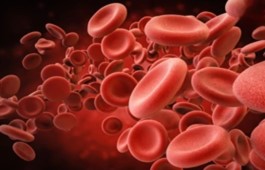- You are here: Home
- Resources
- Protocol
- Protocol for the Preparation of Anti-Red Blood Cell Antibodies (Hemolysin)
Resources
-
Cell Services
- Cell Line Authentication
- Cell Surface Marker Validation Service
-
Cell Line Testing and Assays
- Toxicology Assay
- Drug-Resistant Cell Models
- Cell Viability Assays
- Cell Proliferation Assays
- Cell Migration Assays
- Soft Agar Colony Formation Assay Service
- SRB Assay
- Cell Apoptosis Assays
- Cell Cycle Assays
- Cell Angiogenesis Assays
- DNA/RNA Extraction
- Custom Cell & Tissue Lysate Service
- Cellular Phosphorylation Assays
- Stability Testing
- Sterility Testing
- Endotoxin Detection and Removal
- Phagocytosis Assays
- Cell-Based Screening and Profiling Services
- 3D-Based Services
- Custom Cell Services
- Cell-based LNP Evaluation
-
Stem Cell Research
- iPSC Generation
- iPSC Characterization
-
iPSC Differentiation
- Neural Stem Cells Differentiation Service from iPSC
- Astrocyte Differentiation Service from iPSC
- Retinal Pigment Epithelium (RPE) Differentiation Service from iPSC
- Cardiomyocyte Differentiation Service from iPSC
- T Cell, NK Cell Differentiation Service from iPSC
- Hepatocyte Differentiation Service from iPSC
- Beta Cell Differentiation Service from iPSC
- Brain Organoid Differentiation Service from iPSC
- Cardiac Organoid Differentiation Service from iPSC
- Kidney Organoid Differentiation Service from iPSC
- GABAnergic Neuron Differentiation Service from iPSC
- Undifferentiated iPSC Detection
- iPSC Gene Editing
- iPSC Expanding Service
- MSC Services
- Stem Cell Assay Development and Screening
- Cell Immortalization
-
ISH/FISH Services
- In Situ Hybridization (ISH) & RNAscope Service
- Fluorescent In Situ Hybridization
- FISH Probe Design, Synthesis and Testing Service
-
FISH Applications
- Multicolor FISH (M-FISH) Analysis
- Chromosome Analysis of ES and iPS Cells
- RNA FISH in Plant Service
- Mouse Model and PDX Analysis (FISH)
- Cell Transplantation Analysis (FISH)
- In Situ Detection of CAR-T Cells & Oncolytic Viruses
- CAR-T/CAR-NK Target Assessment Service (ISH)
- ImmunoFISH Analysis (FISH+IHC)
- Splice Variant Analysis (FISH)
- Telomere Length Analysis (Q-FISH)
- Telomere Length Analysis (qPCR assay)
- FISH Analysis of Microorganisms
- Neoplasms FISH Analysis
- CARD-FISH for Environmental Microorganisms (FISH)
- FISH Quality Control Services
- QuantiGene Plex Assay
- Circulating Tumor Cell (CTC) FISH
- mtRNA Analysis (FISH)
- In Situ Detection of Chemokines/Cytokines
- In Situ Detection of Virus
- Transgene Mapping (FISH)
- Transgene Mapping (Locus Amplification & Sequencing)
- Stable Cell Line Genetic Stability Testing
- Genetic Stability Testing (Locus Amplification & Sequencing + ddPCR)
- Clonality Analysis Service (FISH)
- Karyotyping (G-banded) Service
- Animal Chromosome Analysis (G-banded) Service
- I-FISH Service
- AAV Biodistribution Analysis (RNA ISH)
- Molecular Karyotyping (aCGH)
- Droplet Digital PCR (ddPCR) Service
- Digital ISH Image Quantification and Statistical Analysis
- SCE (Sister Chromatid Exchange) Analysis
- Biosample Services
- Histology Services
- Exosome Research Services
- In Vitro DMPK Services
-
In Vivo DMPK Services
- Pharmacokinetic and Toxicokinetic
- PK/PD Biomarker Analysis
- Bioavailability and Bioequivalence
- Bioanalytical Package
- Metabolite Profiling and Identification
- In Vivo Toxicity Study
- Mass Balance, Excretion and Expired Air Collection
- Administration Routes and Biofluid Sampling
- Quantitative Tissue Distribution
- Target Tissue Exposure
- In Vivo Blood-Brain-Barrier Assay
- Drug Toxicity Services
Protocol for the Preparation of Anti-Red Blood Cell Antibodies (Hemolysin)
GUIDELINE
An antibody is an immune-specific globulin produced by the body after stimulation by an antigen. In immunological practice, to prepare antibodies, antigenic substances (bacteria, viruses, toxoids, serum, and other proteins) are often injected into animals. After a certain period, a large number of specific antibodies can be produced in the animal's serum. This serum containing specific antibodies is called immune serum. Immune serum is not only important for the diagnosis, prevention, and treatment of infectious diseases, but also important for organ transplantation, tumors, and certain scientific research.
METHODS
Preparation of red blood cell suspension
- The anticoagulated blood is first precipitated by centrifugation (2000 cpm x 5 minutes) and the supernatant is aspirated. Add 2-3 times saline and mix by repeated blows with a capillary burette, centrifuge for 5 minutes, and aspirate the supernatant. Wash 3 times in a row, the last time can be centrifuged for 10 minutes to make the blood cells dense at the bottom of the tube. Until the supernatant is clear and colorless, the supernatant should be aspirated again, and the blood cells should be kept in a dense mass.
- Use saline to prepare the red blood cells to the required concentration, i.e., the blood cell suspension for the test. If 10% suspension is required, 1 ml of washed red blood cells and 9 ml of saline should be added.
Immunization methods
- Select 2-3 kg healthy male rabbits and immunize them according to the following dose and procedure. Day 1 whole blood injection 0.5 intradermal, day 3 whole blood injection 1.0 intradermal, day 5 whole blood injection 1.5 intradermal, day 7 whole blood injection 2.0 intradermal, day 9 whole blood injection 2.5 intradermal, day 12 20% red blood cell suspension whole blood injection 1.0 IV, day 15 20% red blood cell suspension whole blood 1.0 IV.
- 7 days after the last injection, ear vein blood collection 1 ml. Titrate the blood unit up to 1:2000 or more can be carotid artery bloodletting, separation of serum. Put an equal amount of glycerol antiseptic, divide it into sterile ampoules, and store it at 4°C for backup.
NOTES
Sheep blood taken and mixed with sterilized preservation solution in equal parts and placed in the refrigerator can be stored for several weeks, or anticoagulation methods can be used.
RELATED PRODUCTS & SERVICES
For research use only. Not for any other purpose.




